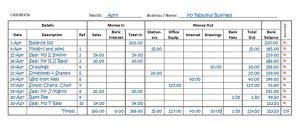
Errors such as incorrect amounts, missing purchase order references, or unclear terms often cause customers to reject or delay payments. Businesses invoice-to-cash implementing AI invoice automation report transformative results across all key metrics. DSO reductions of 15-30% are common, with some achieving even greater improvements. Collection efficiency improves as staff handle 3-4x more invoices without adding headcount. AI invoice automation achieves its full potential through seamless integration with existing business systems.
- Organize practical workshops on amicable debt collection, including simulated dunning and negotiation.
- Many companies still rely on outdated, manual invoicing systems.
- Your payment collection becomes more efficient when you let automation handle the heavy lifting.
- Customer engagement is often overlooked in receivables management.
- From multinational corporations to small businesses, the approaches to DSO reduction are as varied as the companies themselves.
- To optimize your DSO management, consider implementing clear invoice terms to avoid confusion and speed up payments.
Applications of AI in DSO Reduction

By assessing a customer’s financial stability, businesses can avoid engaging with unreliable payers, thereby reducing bad debts. Machine Learning (ML) algorithms assess various factors such as payment history, order size, creditworthiness, and interactions with previous collection efforts. These insights allow businesses to segment customers based on risk levels and implement proactive collection strategies. For instance, customers identified as high-risk can receive earlier follow-ups or stricter payment terms.
Reduced Days Sales Outstanding (DSO)
- Weak credit policies or inconsistent enforcement can lead to slow payments.
- Most companies assign hundreds or thousands of accounts per collections analyst depending on the size of the company.
- Extended payment timelines improve liquidity and provide more flexibility in managing other financial obligations.
- Similarly, receivables aged beyond normal payment terms represent higher collection risk and potential cash flow problems.
- Late payments weaken cash flow, disrupt financial planning, and create uncertainty for future investments.
Extending credit without proper vetting increases the risk of delayed or non-payment. Businesses that lack formal credit checks or do not assign credit limits often find themselves with receivables that are difficult to collect. If reducing DSO were simple, every business would already have an optimal number.

Case Study 3: B2B Software Provider

Understanding these metrics and strategies will open the path to ideal cash flow management. Understanding DSO and its impact on cash flow is the first step toward improving receivable management. To reduce days sales outstanding, businesses must optimize their invoicing and collection processes while leveraging automation tools. The next step is leveraging data-driven AR automation software to reduce DSO. Days Sales Outstanding (DSO) measures how quickly your business converts credit-driven receivables into cash. While optimal DSO varies across industries, a lower number indicates more effective collection practices.
Setting the Stage for Effective DSO Reduction Strategies
- If you’re considering implementing an AR automation tool to reduce DSO, check out our pricing plans to find the best solution for your business needs.
- A study by McKinsey found that 70% of collections calls go to customers who would have paid anyway.
- This article is aimed at CFOs, credit managers and the finance function.
- This reduces the friction in the payment process and accelerates the cash flow.
- Modern technology solutions have revolutionized how SaaS companies track and manage their DSO metrics, making the process more efficient and accurate than ever before.
- Accuracy and timely delivery of your business’s invoices is one of the most impactful methods for reducing DSO.
Buyers tend to pay faster if they are making those payments with their preferred payment methods. However, if multiple reminders don’t receive a response, you should consider walking QuickBooks Accountant away from the customer. Getting rid of potential business is always challenging, but if customers are regularly late on payments, they might not be worth the trouble.

There are many strategies used to make DSO targets achievable and effective. While preparing the DSO targets, make sure that your terms are as easy for the customers as they could ever be. Standard invoice payment terms (and DSO) can vary significantly by industry. Industries like retail tend to have shorter payment terms and lower DSOs, while fields such as manufacturing tend to have longer payment terms and higher DSOs. If https://www.bookstime.com/ your team is exploring how to reduce DSO or simply searching for proven DSO reduction strategies, IntelliChief is here to help. Our platform doesn’t just bolt on to your ERP—it works within your ERP to enable real-time updates, faster reconciliations, and a more agile AR process.
Operational efficiency
You’ll want to monitor your DSO trends regularly to spot potential issues before they impact your cash flow. Your payment collection becomes more efficient when you let automation handle the heavy lifting. Research shows that companies using these systems typically see DSO improvements of days, markedly boosting their operational efficiency. You’ll need to balance customer preferences with your business needs, as most B2B buyers want flexible 30-, 60-, or 90-day terms. To optimize your DSO management, consider implementing clear invoice terms to avoid confusion and speed up payments.